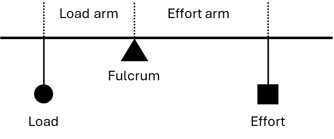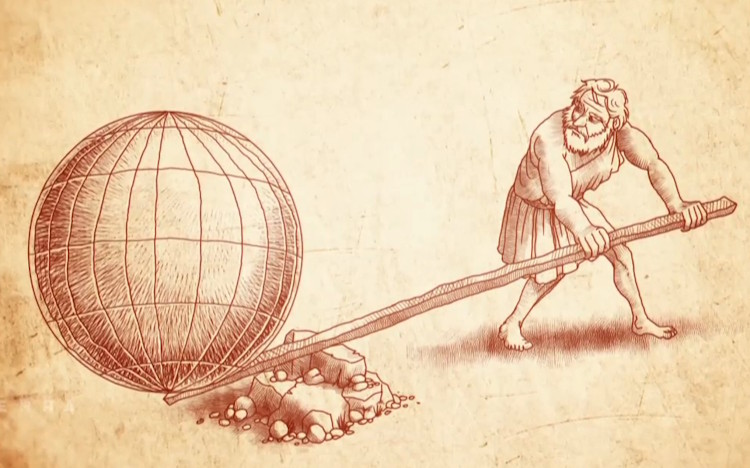"Give me a lever long enough and a fulcrum on which to place it, and I shall move the world," declared the ancient Greek scientist Archimedes. He wasn’t exaggerating – he was revealing one of the most powerful ideas in science. Long before modern machines were invented, people used levers to lift stones, move logs, and build temples and pyramids. A lever is a simple tool, but it can do remarkable things – it lets you use a small force to move a large weight, just by changing how and where you apply that force.
In this activity, you’ll explore how levers work and discover for yourself how changing the position of the fulcrum, load, and effort can make lifting easier – just as Archimedes described thousands of years ago.
Introduction
A lever is a simple machine that helps us lift or move loads easily. It consists of a rigid bar (like a scale, stick, or rod) that turns around a fixed point called the fulcrum. When you apply a force (called the effort) on one side, it helps lift a load on the other side.
Levers make work easier by either reducing the effort needed (first and second-order levers) or increasing the distance or speed of movement (third-order lever).
Levers are classified into three types based on the position of the fulcrum, load, and effort:
-
First-order Lever: The fulcrum is between the load and the effort. Example: Seesaw, crowbar, scissors.
-
Second-order Lever: The load is between the fulcrum and the effort. Example: Wheelbarrow, nutcracker, bottle opener.
-
Third-order Lever: The effort is between the fulcrum and the load. Example: Tongs, fishing rod, human arm.
Activity
Requirements
Meter stick, medium or large binder clip, cylindrical pencil or pen (to act as the fulcrum rod), two equal piles of books (to support the fulcrum), spring balance, two different weights (e.g., metal washers or small objects tied with thread), thread or string, ruler.
Safety Instructions
Be careful while handling the weights. Do not use heavy weights that could damage the meter stick or cause it to tip over.
Getting Ready
-
Attach the fulcrum: Clip the binder clip at the center of the meter stick (at the 50 cm mark). Pass a pencil or pen through the handles of the binder clip. Rest the pencil horizontally between two equal piles of books, so the meter stick can move freely up and down. Adjust until the meter stick stays approximately horizontal – this is your balanced position.
-
Attach the weights: Tie short pieces of thread to the weights so they can hang from the meter stick. You can hang them through small notches or tape loops at various points along the stick (e.g., 10 cm, 20 cm, 30 cm, etc., on both sides of the fulcrum).
Procedure
-
If you don’t know the exact weight of your objects, measure each weight using the spring balance and record the values.
-
Attach one weight to the left side of the beam balance at a certain distance from the fulcrum. This weight is your load.
-
Attach the other weight to the right side. Adjust its position along the beam until the balance is horizontal. This weight is your effort.
-
Measure and record the distance from the fulcrum to the load (load arm) and the distance from the fulcrum to the effort (effort arm).
-
Move the load to a different position along the left side and repeat steps 3 and 4. Record all observations carefully.
-
Look at your recorded measurements and form a hypothesis: how does changing the position of the load affect the effort needed to balance the lever?
 Image Credit: Kindle Education.
Image Credit: Kindle Education.
Observations
| Sr. No. | Load | Load arm | Load x Load arm | Effort | Effort arm | Effort x Effort arm |
|---|---|---|---|---|---|---|
| 1. | ||||||
| 2. | ||||||
| 3. |
Reflect and Discuss
-
Based on your observations, what relationship did you find between the load, effort, and their distances from the fulcrum?
-
The setup described is an example of a first-order lever. How would you modify the setup so that it works as a second-order or a third-order lever?
-
Do you think this relationship would be the same for second-order and third-order levers?

